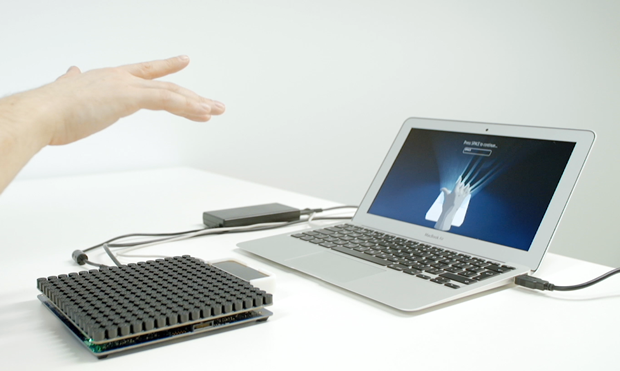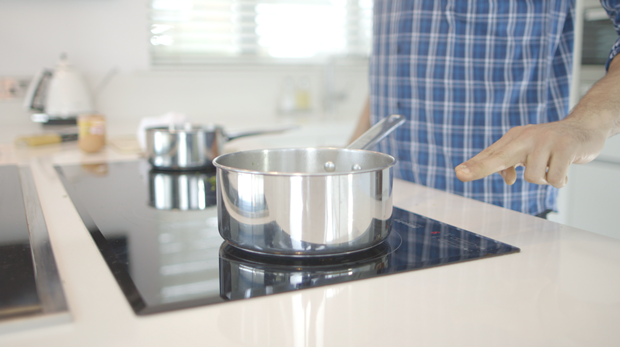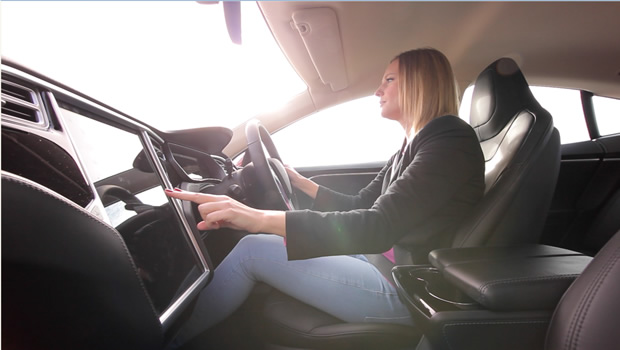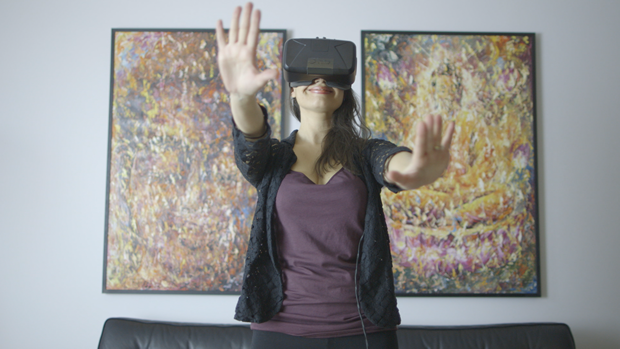'More than a feeling'
Inspired by Ian Waterman; a man with no sense of touch who has to rely solely on sight for control; Tom Carter, CTO and Founder of Ultrahaptics, has created and developed ultrasonic free-space haptics technology. Carter explained at the Ultrahaptics Press Event last month at their offices in Bristol's Enterprise Zone, VR is never going to recreate a truly immersive experience without touch.
Despite mastering the creation of a virtual world with sight and sound, touch is the sense that takes VR to another level. Inconceivable to live without, the tactile senses allow us to read the world through haptic feedback.
This is what is created by ultrasonic free-space haptics technology. There has already been development of gesture control systems, but these are heavily reliant on sight for visual feedback; the Xbox Kinect for example. The difference with Ultrahaptics’ technology is that it provides haptic feedback and in this way, relies upon touch alone. This then opens up a vast range of possibilities for many applications; automotive, appliances, multimedia, VR and gaming.
So how is it possible to feel something that’s not there? To interact with the invisible? It uses acoustic radiation force. The principle ‘whereby a phased array of ultrasonic transducers is used to exert forces on a target in mid-air’ – according to Carter’s academic essay on the technology.

The potential for technology which combines complete gesture control with haptic feedback is diverse. From recreational applications, like VR gaming, to more practical applications; for example, in the place of buttons in hospital elevators to prevent the transmission of infection.
Ultrahaptics was created by Tom Carter, in his third year of his undergraduate course at the University of Bristol where he studied Computer Science, the technology was further developed when the Ultrahaptics company was formed in 2013. Alongside technology development, Ultrahaptics also develops its workforce equality with 26% of its staff being female, and a further 14% of its total staff being female engineers.
Dramatically oversubscribed in its fundraising stage, Ultrahaptics raised over £10m and further forecasts a sales projection of $2.5m for this year, following its $500,000 achievement in 2015. Ultrahaptics were also awarded the Horizon 2020 EU grant of €1.49m in 2015, a grant which aims to aid the development of promising SMEs.
With a flexible architecture system, the Ultrahaptic technology has captured the attention of various markets, with its potential to be utilised in various applications. Ultrahaptics have various reference designs to showcase the technology's versatility, with many of the ideas for applications coming from interested parties, Ultrahaptics explained.
Within appliances, domestic whitegoods could benefit from the gesture technology, eliminating the middle man between command and execution. Forcefields around hot surfaces, such as hobs etc., have already been designed, which would warn the user that the hob is on or still hot, before their hand is burned. Another reference design is Ultrahaptic technology for hob controls, so that the user can turn the hobs on and off, or adjust the heat setting, without touching the surface, which could prove very useful when in a messy environment during cooking.

With the fast-evolving automotive technology market, Ultrahaptics have already received a large amount of interest for its technology within automotive applications. Within an environment which requires the complete focal attention of the driver, Ultrahaptic technology now offers car makers the opportunity to implement control systems which have total gesture control, and most importantly, with its haptic feedback, removes the need for a visual confirmation. The driver no longer has to turn their eyes from the road in order to look for a volume button, or to adjust the air conditioning; it can all be executed with gesture control.
With cars being referred to as 'computers on wheels' more and more with the advances in technology for the automotive market, Ultrahaptics provides a solution to combine safety with design.

The free-space haptic technology has many practical applications, but an important market, which has already addressed Ultrahaptics, is the VR gaming industry. The technology opens up a range of possibilities to change the VR gaming experience, combining visual and sound VR software with haptic feedback, this breaks down the last barrier to create an immersive experience. There have already been some creations of technology that provides haptic feedback for VR gaming, with certain technology gloves, but Ultrahaptics takes this a step further, allowing the user to feel the feedback with their bare hands.
The ultrasonic transducers used to emit vibrations that contact with the user's skin are modulated over 40KHz, which the human hand cannot feel. The system uses multiple localised points with XYZ coordinates relating to allocated commands. Carter's essay emphasises the importance of the technology in providing an 'additional information channel alongside the visual', creating a simplistic user interface.
In an interview with Ultrahaptics' CTO and Founder, Tom Carter explained to Electronic Specifier that whilst their technology had been developed to accomodate multiple focal points, for more advanced applications such as mid-air, gesture keyboards, "In terms of control, simplicity is best."








